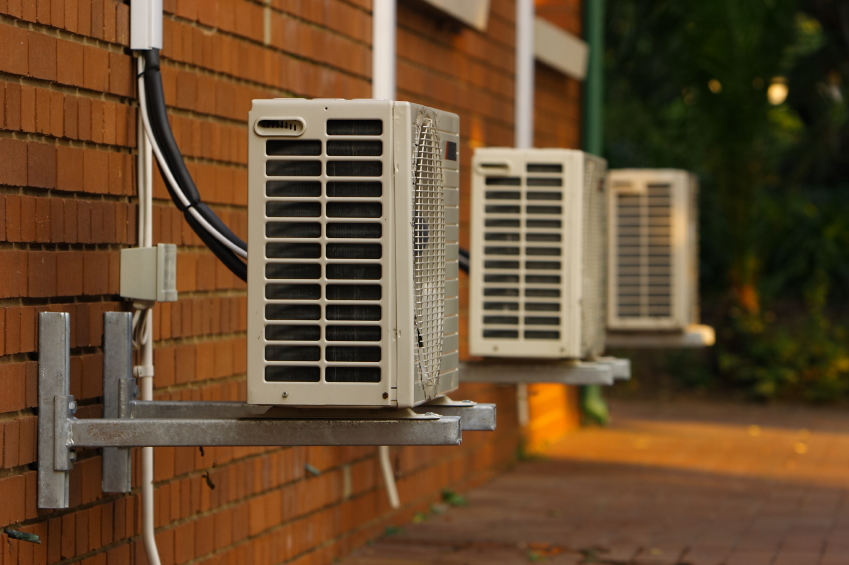Help! My Central Air Stopped Working!

Which is worse: your furnace quitting in the middle of a cold snap or the AC conking out during a heat wave? If you're like most people, your answer probably changes with the weather. So let's say it's the hottest time of summer and your central air stopped working. What should you do? You can call a service professional and beg for immediate help or you can check out a few things on your system to see whether you can tackle a DIY solution. In the end, you may end up doing both (hopefully with less begging), but at least you'll learn something about your heating and cooling system and get some ideas for the next time HVAC catastrophe strikes (possibly this winter).
The Main Parts
A conventional AC system has two main pieces of equipment. The compressor/condenser unit is the big boxlike thing with a huge fan, usually located outdoors but sometimes in an attic. The air handler is indoors. In cold-winter climates, most air handlers are actually the forced-air furnace, which uses its blower fan to circulate cool air throughout the home's ductwork. If your central air stopped working, the first things to check are the circuit breakers and power switches controlling the compressor/condenser and the air handler.
Check for Power
Central AC systems have a lot of sensors and switches, any of which might shut down the entire works. Some of these are inside the units and should be checked only by a service pro. But there are several easily accessible power cutoffs and safety switches you can check if your central air stopped working. The first are the breakers (or fuses) powering the AC and the air handler. Inside your home's electrical panel, or breaker box, the AC breaker is a 240-volt, double-pole (one of the big ones) breaker switch. The air handler most likely has a standard 120-volt, single-pole breaker and will be labeled "furnace" if you have forced-air heat with gas. Make sure these breakers are on.
Next, check the safety cutoff switch near the compressor/condenser unit; it may be on the unit itself or nearby on a house wall. Indoors, check for a cutoff switch near the air handler; this may look like a standard wall switch mounted inside a junction box on or near the outside of the unit. These cutoff switches usually are left on unless the units are being serviced.
Finally, make sure the door to the air handler's blower compartment is fully closed. This may be the door or panel you open or remove to change the furnace filter. It has a push-button switch that's pressed (allows for power) when the door is closed properly.
Check the Thermostat
Not to insult anyone's intelligence here; a thermostat can get bumped or switched off accidentally (or kids make their own adjustments), so you always have to check it if your central air stopped working. Make sure it's set to "Cool" (not "Heat," of course) and that the set temperature is at least 5 degrees cooler than the room temp. Some AC systems have a delay that allows for temperature swings of 2 or 3 degrees before they kick on.
Check the Drainage System
The physical processes that help your AC system cool and dehumidify your home create a lot of condensation. This must be drained from the indoor unit to prevent water damage to nearby house parts. Most units have at least one drain and an overflow pan. If the drain gets clogged and can't keep up the overflow pan collects the water. If the pan starts to fill up it trips a sensor that shuts down the whole system. Empty the pan and, if possible, clear the drain line, then try to start up the system again.
Just keep in mind that a full (or rusty) overflow pan may indicate a more serious problem than a clogged drain, so be sure to have the system checked soon. Also be aware that some setups have a secondary drain line instead of a sensor. This drain may terminate near a window or other obvious (and seemingly odd) location. That's for a reason: if you see water coming out of the drain, it's telling you the system has a problem, even if you don't have a situation where your central air stopped working.
Check the Filter
Some air handler units have a sensor that shuts down the system if the air filter is too dirty. Discovering that your central air stopped working altogether is a pretty severe reminder to change your filter, but some manufacturers are serious about air quality in their systems. So, it can't hurt to check—and change, if necessary—the filter as part of your investigation.
Philip Schmidt writes for Networx.com.
Updated February 28, 2018.
Looking for a Pro? Call us (866) 441-6648

Heating & cooling Average Costs
HVAC Contractors Experiences

A Major A/C And Furnace Replacement

Restaurant Ceiling Fan Installation To Beat The Florida Heat



